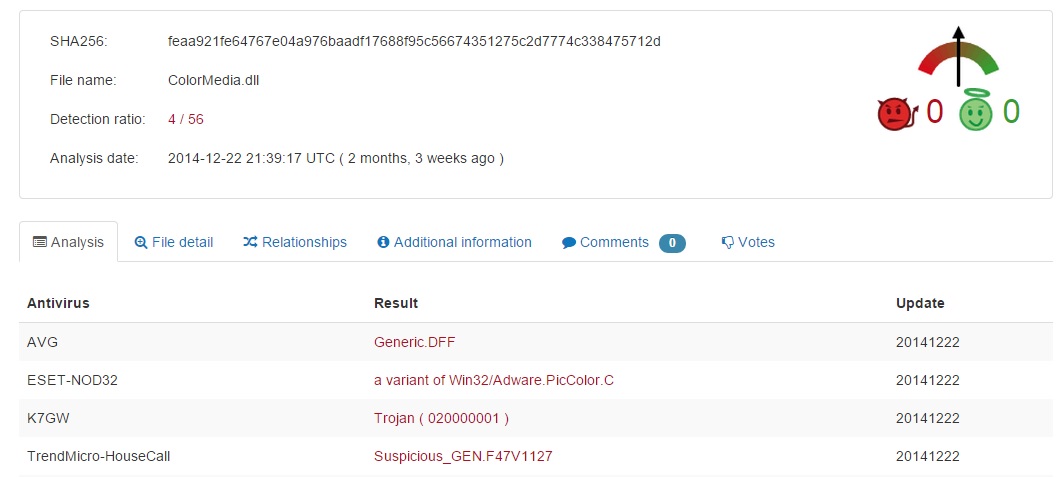How To Remove Dll File
Now take your computer or laptop and follow these steps to delete DLL files in your windows 10.Use 'Windows' and 'R' keys at the same time on your keyboard. This opens a 'Run' box on your screen.Type 'CMD' and click the 'OK' button. This launches the Windows Command Prompt utility.Type 'Regsvr32 /u /s C:Path to filefile.dll' and press the 'Enter' key.
You must replace 'Path to file' and 'File.dll' with the actual path to your file and file name.Type 'Exit' and press 'Enter' to close the Windows Command Prompt utility. Click the 'All files and folders' link in the Search window, and type the name of the.dll file you want to delete into the empty field. Click the 'Search' button to begin the search.2.Locate the file in the search results and take note of the file path,Typically,.dll files will be found in 'C:WindowsSystem32,' but this can vary depending on the specific type of.dll file and the version of Windows you're using.3. Right-click on the.dll file in the search results, and select 'Delete' from the options that pop up.
How to unregister and remove a dll file DLL (Dynamic Link Library) files are constantly shared between installed programs, so those can use the same functions, such as printing. It is very useful feature for developers, so they don’t need to include those libraries in every program they develop. That is to say, deleting a DLL file could cause one or more other programs to stop functioning correctly, if at all. Hard to find Some software programs may also install DLL files into multiple folders outside the Program Files folder (where most programs are installed).
This will move the file to the Recycle Bin.4. Click the 'Start' button in Windows, and select 'Run' from the Start Menu. Type 'cmd' into the empty field, and click the 'Run' button.5. Type 'regsvr32 /u C:filepathfilename.dll' into the command line, substituting the specific file path and name of the file for 'filepath' and 'filename,' respectively. For example, if you wanted to delete the file 'windows.dll' from the file path 'C:WindowsSystem32,' you would type 'regsvr32 /u C:WindowsSystem32windows.dll.' Press 'Enter' after typing this line to unregister the.dll file from your system, completing the process. Click the 'Start' button in Windows and select 'Search' from the Start Menu.2.
How To Remove A Dll File From Startup
Click the 'All files and folders' link in the Search window, and type the name of the.dll file you want to delete into the empty field.3. Click the 'Search' button to begin the search.4. Locate the file in the search results and take note of the file path, which indicates where the file is stored. This is very important, because you will need to know the file path for the last steps, so you may want to write it down. Typically,.dll files will be found in 'C:WindowsSystem32,' but this can vary depending on the specific type of.dll file and the version of Windows you're using.5.
Right-click on the.dll file in the search results, and select 'Delete' from the options that pop up. This will move the file to the Recycle Bin.6. Click the 'Start' button in Windows, and select 'Run' from the Start Menu.7. Type 'cmd' into the empty field, and click the 'Run' button.8. Type 'regsvr32 /u C:filepathfilename.dll' into the command line, substituting the specific file path and name of the file for 'filepath' and 'filename,' respectively.
How To Remove Dll Files In Windows Xp


For example, if you wanted to delete the file 'windows.dll' from the file path 'C:WindowsSystem32,' you would type 'regsvr32 /u C:Windows System32windows.dll.' Press 'Enter' after typing this line to unregister the.dll file from your system, completing the process. HackerCombat LLC is a news site, which acts as a source of information for IT security professionals across the world. We have lived it for more than 1 year since 2017, sharing IT expert guidance and insight, in-depth analysis, and news. We also educate people with product reviews in various content forms.As a dedicated cybersecurity news platform, HC has been catering unbiased information to security professionals, on the countless security challenges that they come across every day.
We publish data on comprehensive analysis, updates on cutting-edge technologies and features with contributions from thought leaders. Hackercombat LLC also has a section extensively for product reviews and forums.We are continuously working in the direction to better the platform, and continue to contribute to their longevity and success.
Igdrclneo64.dll file fromunknown company is part ofunknown product. Igdrclneo64.dll located in cwindowssystem32driverstorefilerepositoryigdlh64.infamd642e329e8610bbb375igdrclneo64.dll with file size 5090256 byte, file version Unknown version, MD5 signature.There is a lot of process running on your system that consumes CPUresources and memory, and some of these processes appear to bemalicious files and they attack your PC.
To prevent this just software, andinstall it on your computer, and follow the steps bellow. Run application. Then from main window select 'Process Manager' item.wait for few seconds, then after theprocess list appearsscroll down to find igdrclneo64.dll file you want to delete or stop. click the igdrclneo64.dll process file then click the right mousebutton then fromthe list select 'Add to the block list'.
This will prevent this process to run. ( keep in mind youhave to let 'process manager' running. You could make thisapplication run while windows starts, go to options thenselect ' Load automatically on windows startup' then clicksave settings button). Description: igdrclneo64.dll file fromis part of. Igdrclneo64.dll located in cwindowssystem32driverstorefilerepositoryigdlh64.infamd642e329e8610bbb375igdrclneo64.dll with file size 5090256 byte, file version Unknown version, MD5 signature.Check processes running in your PC using online security database. You could use any type of scanning to check your PC against Viruses, Trojans, Spywaresand othermalicious programsRecommended:. To help you analyze the igdrclneo64.dll process on your computer,'Asmwsoft PC optimizer ' programhave proven to be helpful.